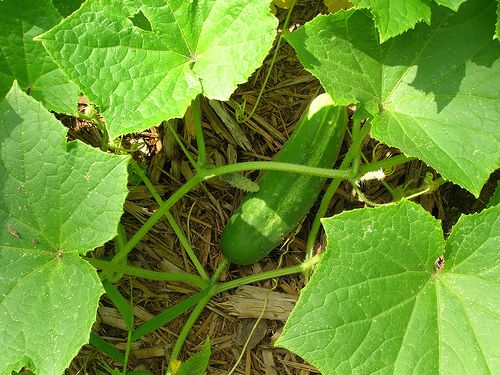
Lately, I’ve had broken-hearted would-be gardeners share stories of their excitement of seeing tiny fruits on their cucumber plants only to have the little cukes shrivel up and die a mere few days later. These gardeners tell me they have a black-thumb, they weren’t born to garden, or the plants simply don’t like them. Their gardening fires are once again rekindled when I explain hand-pollination.
Hand-pollinating cucumbers, pumpkins and squash is a simple technique that comes in handy when Mother Nature doesn’t keep up her end of the bargain by providing bees, butterflies and the rest of the critters that are a necessary ingredient to have fruit on our veggie plants and trees.
Sometimes, Mother Nature isn’t to blame and it’s actually the gardener who kills off all of the garden-sex friends with his or her exuberant attempts to crush the bad guys with powerful chemicals. Either way, someone has to have sex in the garden and sometimes we may be forced to go it alone.
Folks, this is why I bible-thump about attracting the wild things to your yard; we need as much sex in our gardens as we can possibly get. Ideally, it’s kinda cool to let insects have their way with our plants instead of having to do it ourselves (yeah, I went there). Because the fact is that if you don’t have enough pollinating creatures around to spread the love, it’s entirely possible to drum up the romance yourself.
Hand-Pollination
The first thing you need to know is the difference between a male and female flower. Squash (or pumpkins, cucumbers, etc) vines have both male and female flowers. You can spot the female flower by the small fruit (or “potential fruit”) that sits just behind the blossom. The male flower lacks any such fruit.
Take a male flower and gently pull off the petals. Rub the remaining middle part all over the female flower’s middle part. We now have instant fertilization. Another way is to use an artist’s paint brush and gently rub the bristles all around the male flower’s anthers (those are easy to spot because they are covered with the pollen). Then swirl the brush all over the female flower’s stigma.
If you like playing the scientist role and feeling all official, the paint brush technique is the way to go. Either way, whether you rub the two flower parts together or simply use your hand; the story ends the same way. Someone always ends up with fruit.



















Comments
Well done author, super article! A very creative approach comparing sex and fertilizing plants in the garden. I really liked the article.
Log in or create an account to post a comment.
Sign up Log in